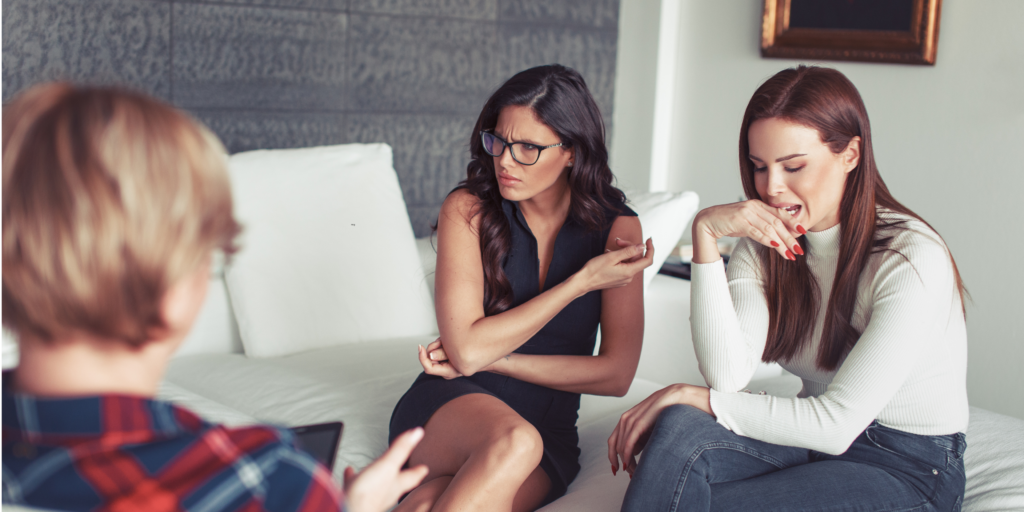Have you ever found yourself in a conversation with someone who had their arms crossed, wondering what it meant? Body language is a fascinating aspect of human communication, revealing hidden meanings and emotions that words alone cannot convey.
Among the numerous non-verbal cues, crossed arms stand out as one of the most intriguing postures. Let’s explore the meaning behind crossed arms in body language, shedding light on its various interpretations and uncovering the messages it communicates.
Table of Contents
What is body language?
Body language, also referred to as nonverbal communication, is the powerful and subconscious way we express our thoughts, feelings, and emotions through our physical movements, gestures, facial expressions, and posture. It is a form of communication that often speaks louder than words, as it can be more authentic and revealing than verbal communication alone.
Body language encompasses a wide range of cues and signals that, when understood and interpreted correctly, can provide valuable insights into a person’s intentions, attitude, confidence, and even their level of interest in a particular conversation or situation.
From a simple nod of agreement to a firm handshake, body language plays a significant role in our everyday interactions and can profoundly impact how we are perceived and understood by others.
The meaning of crossed arms in body language?
1. A Protective Barrier.
Crossing arms often functions as a subconscious act of protection, creating a physical barrier between the person and their surroundings.
This gesture can arise from a sense of defensiveness or unease, signifying that the individual may be feeling guarded, closed off, or even threatened. It serves as a self-soothing mechanism, providing a sense of comfort and security in potentially challenging or uncomfortable situations.

2. Emotional Discomfort.
While crossed arms are commonly associated with feelings of defensiveness, they can also indicate emotional discomfort or distress.
When someone crosses their arms tightly against their chest and their body language is closed off, it may suggest that they are experiencing inner turmoil, uncertainty, or anxiety.
This posture often reflects an attempt to shield oneself from emotional vulnerability, acting as a form of self-comfort or an unconscious means of seeking solitude.
RELATED: The 9 telltale signs of a pathological liar.
3. Evaluating or Assessing.
Sometimes, crossed arms are not indicative of a negative emotion but rather a thoughtful and analytical mindset.
When coupled with a relaxed or neutral facial expression, crossed arms can suggest that someone is engaged in deep thinking, reflecting, or carefully evaluating a situation.
This stance signals that the person desires to detach themselves momentarily to focus inwardly on their thoughts, rather than being present or reactive in the external environment.

4. Disagreement or Resistance.
In the realm of intercommunication, crossed arms can also convey a stance of disagreement or resistance.
If someone folds their arms while engaging in a discussion or listening to another person, it might signal that they hold differing opinions or are skeptical about the information being presented.
In such situations, crossed arms might be accompanied by other signs of disagreement, such as narrowed eyes or a tilted head, reinforcing their contrary position.

Cultural and contextual consideration.
While it is crucial to analyze body language cues, it is equally important to consider cultural and contextual factors.
Body language interpretation can vary across cultures, and gestures that may hold a specific meaning in one culture may have a different connotation elsewhere.
Crossed arms, for instance, might be a habitual posture or even a normative gesture in certain societies, unrelated to defensiveness or disagreement.
How accurate is reading body language?
Body language is our silent communication tool that we use unconsciously in our daily lives. We often hear about its importance in understanding others, but how accurate is it really?
While decoding body language can provide valuable insights into someone’s emotions, intentions, or even deceptions, it is important to remember that it is not an exact science. Body language cues can vary greatly between individuals, cultures, and contexts, making it a complex puzzle to unravel.
Factors like nervousness, personal experiences, and cultural norms can influence the way people express themselves through their bodies.
Therefore, while reading body language can be a helpful skill, it should always be complemented with careful observation, context, and open-mindedness to ensure a more accurate understanding of someone’s nonverbal cues.
Conclusion.
Cracking the code of body language brings us closer to understanding the unspoken elements of human interaction. Crossed arms, though often misconstrued as a sign of negativity, can convey a range of emotions, from defensiveness and discomfort to analytical thinking and cultural habits.
As we familiarize ourselves with the subtleties of non-verbal cues, it is essential to remember that body language should never be interpreted in isolation but should be considered in conjunction with other verbal and non-verbal cues to gain a comprehensive understanding of a person’s state of mind.

